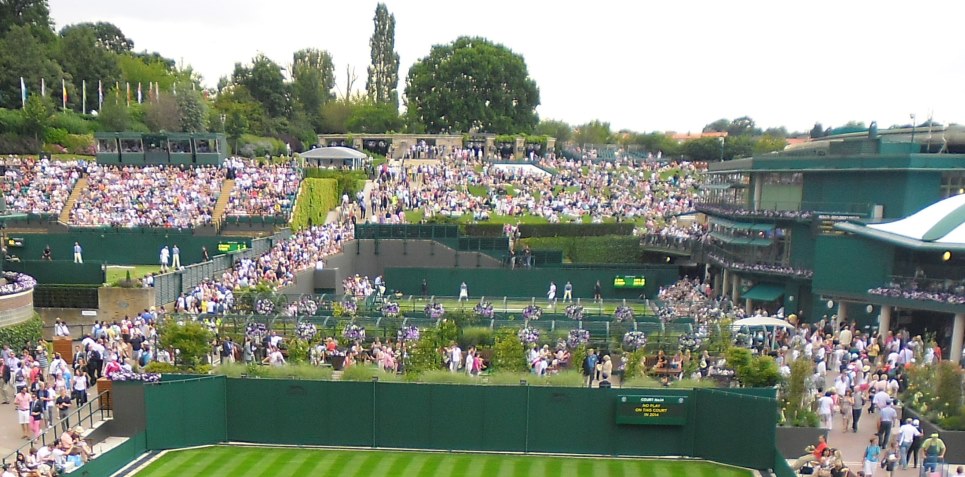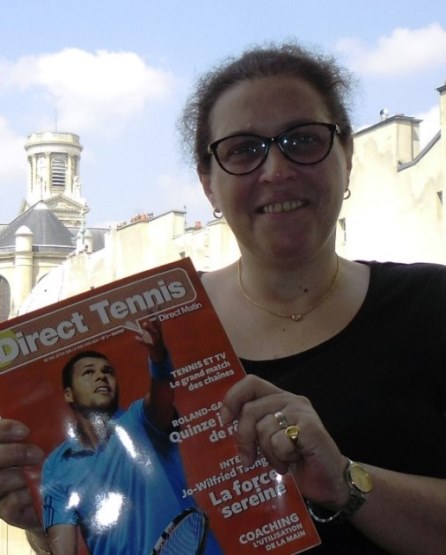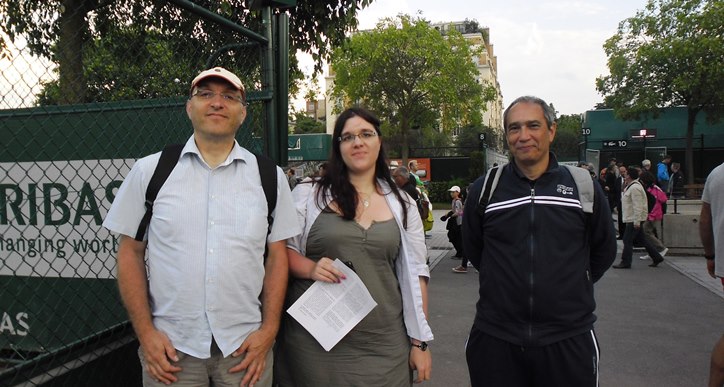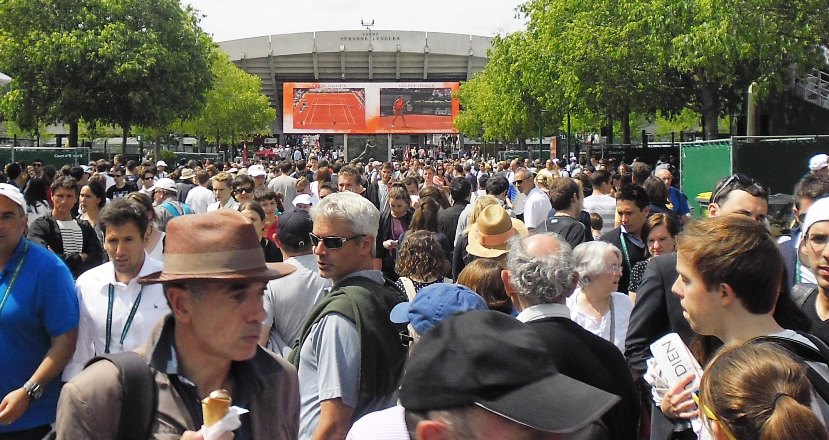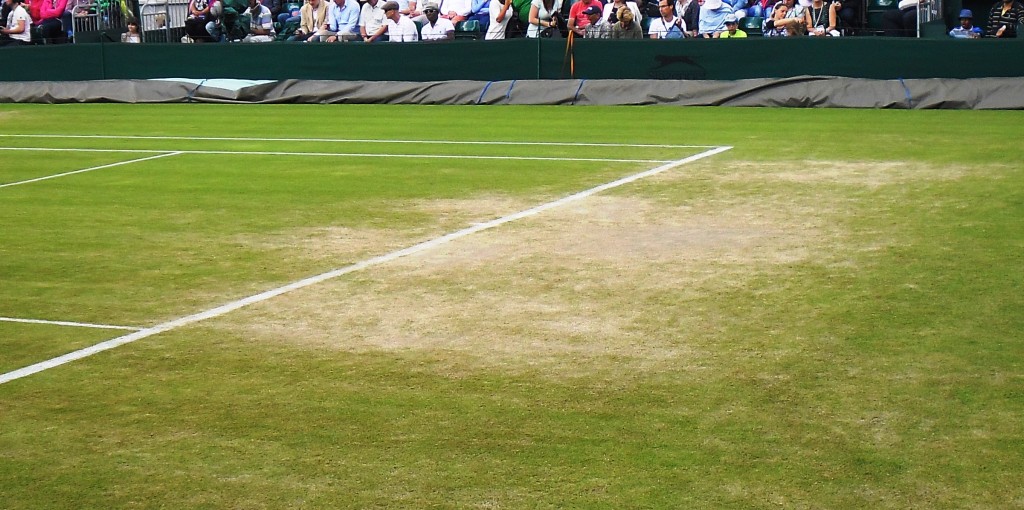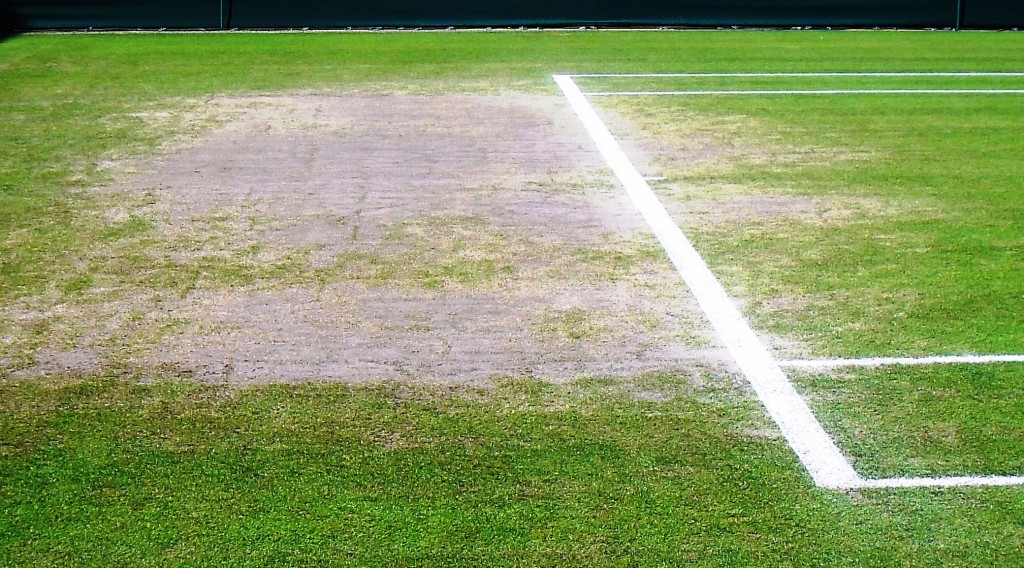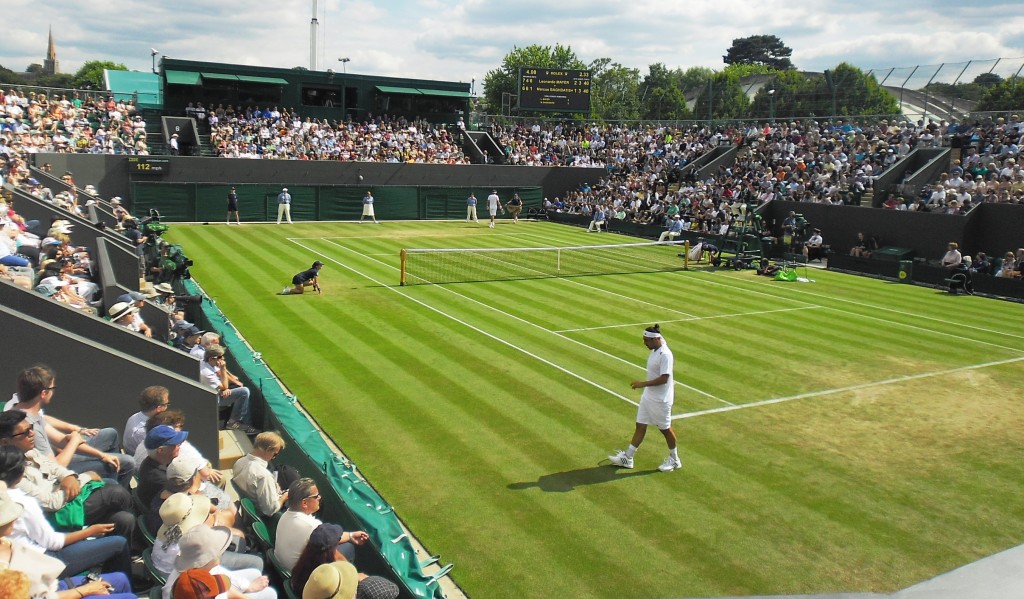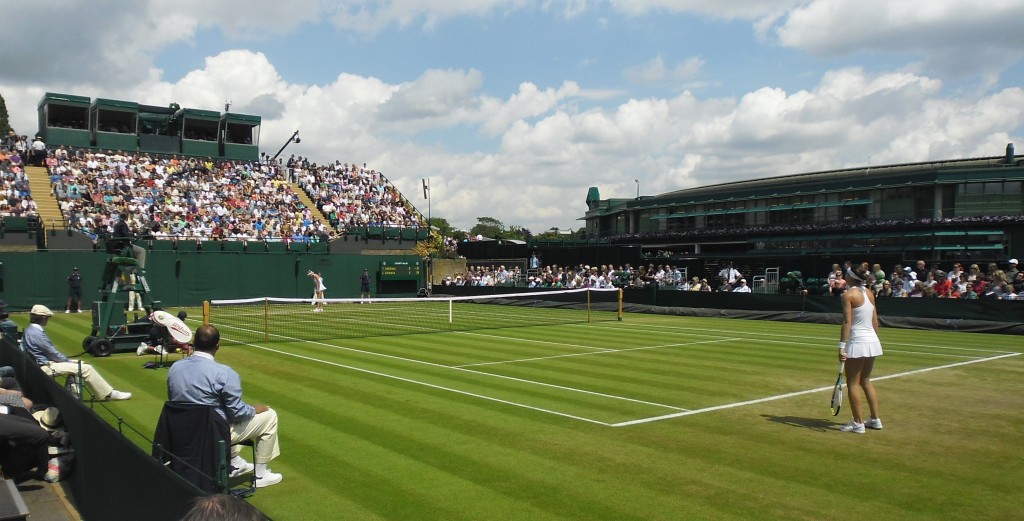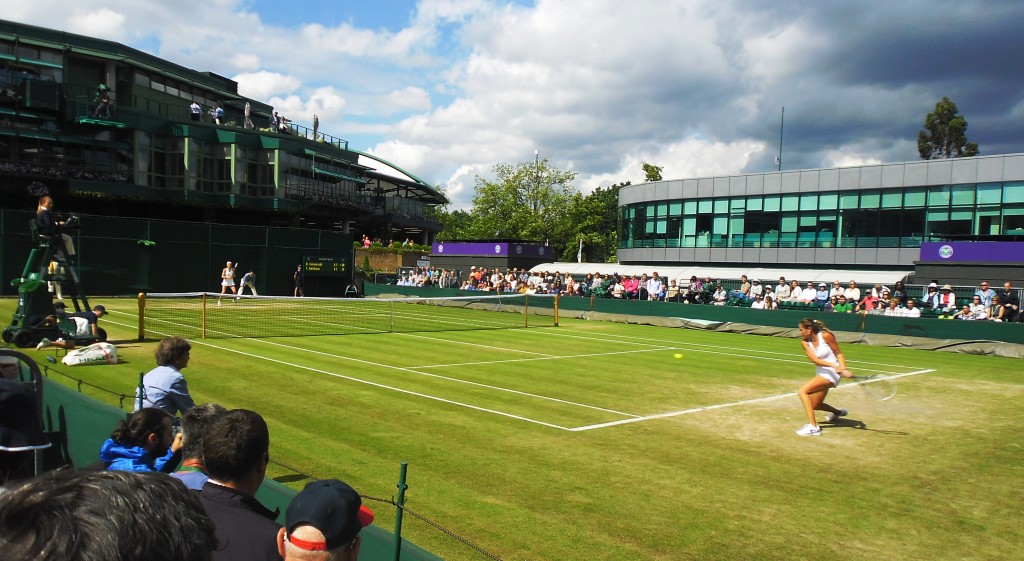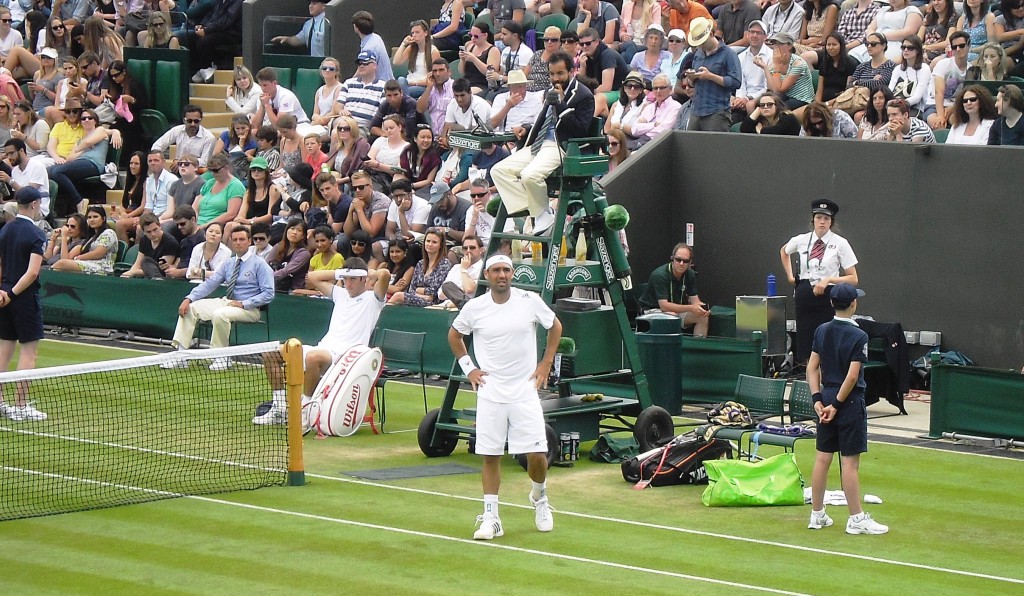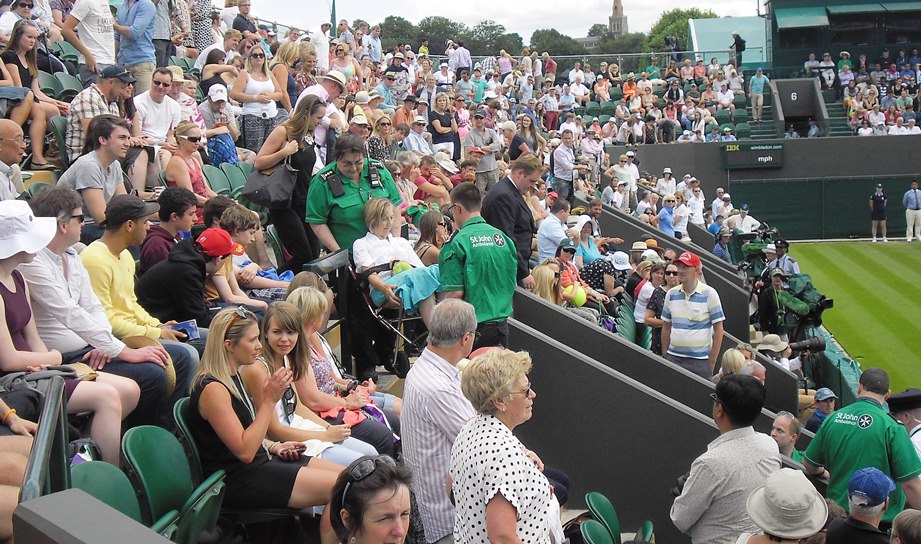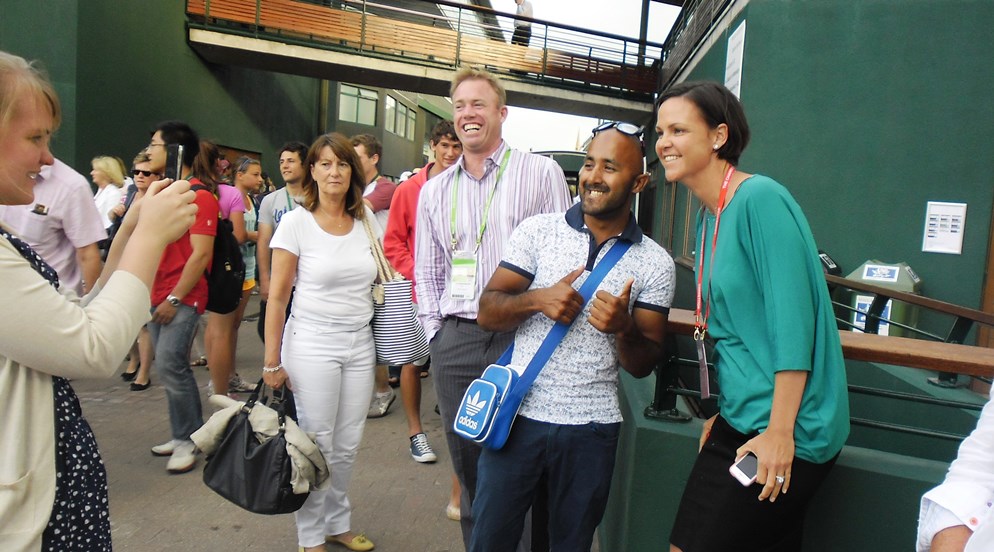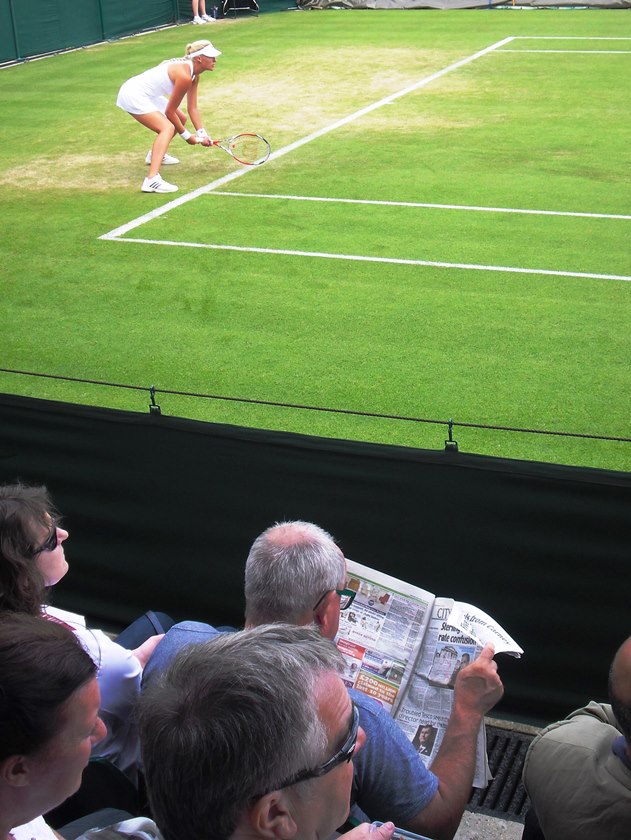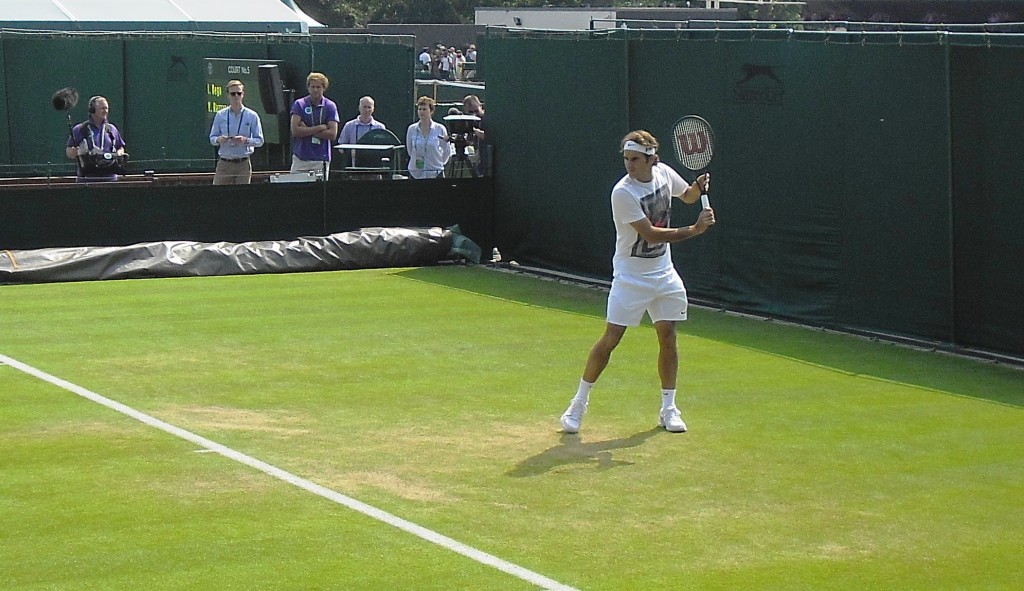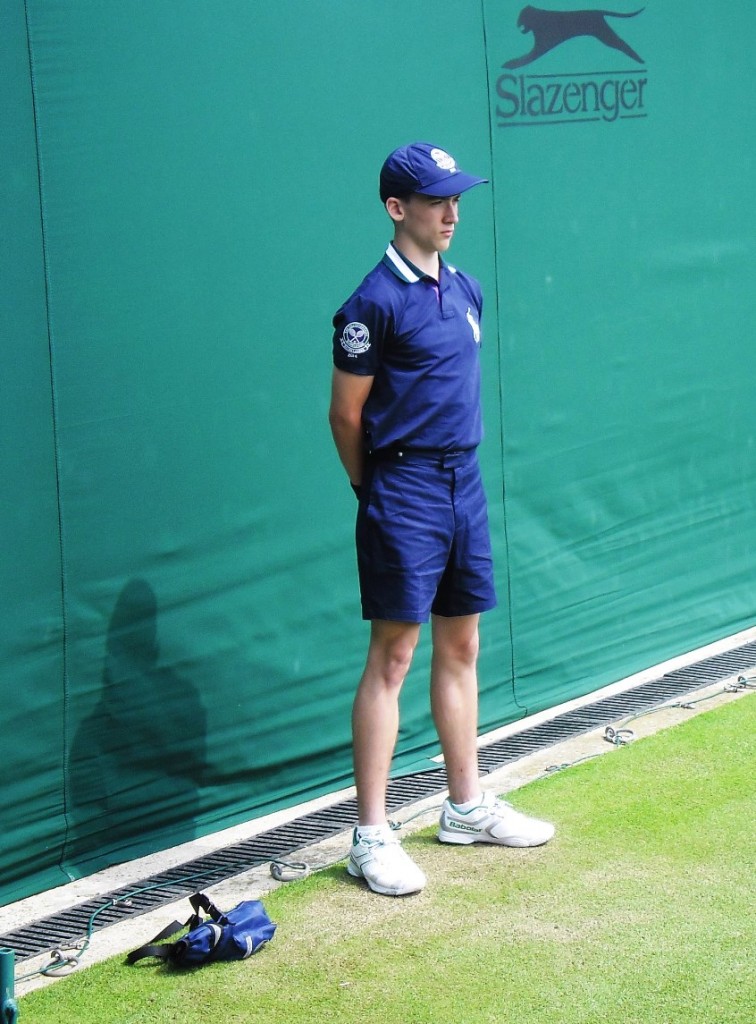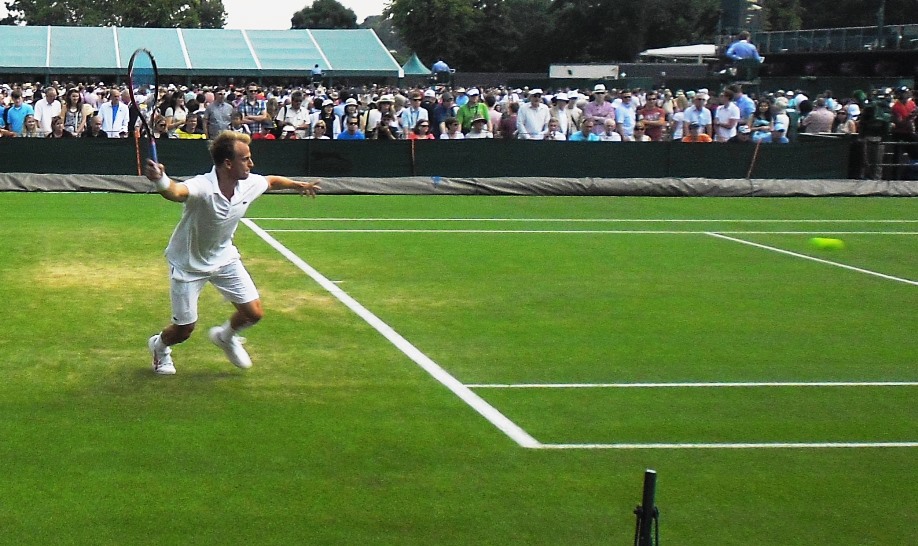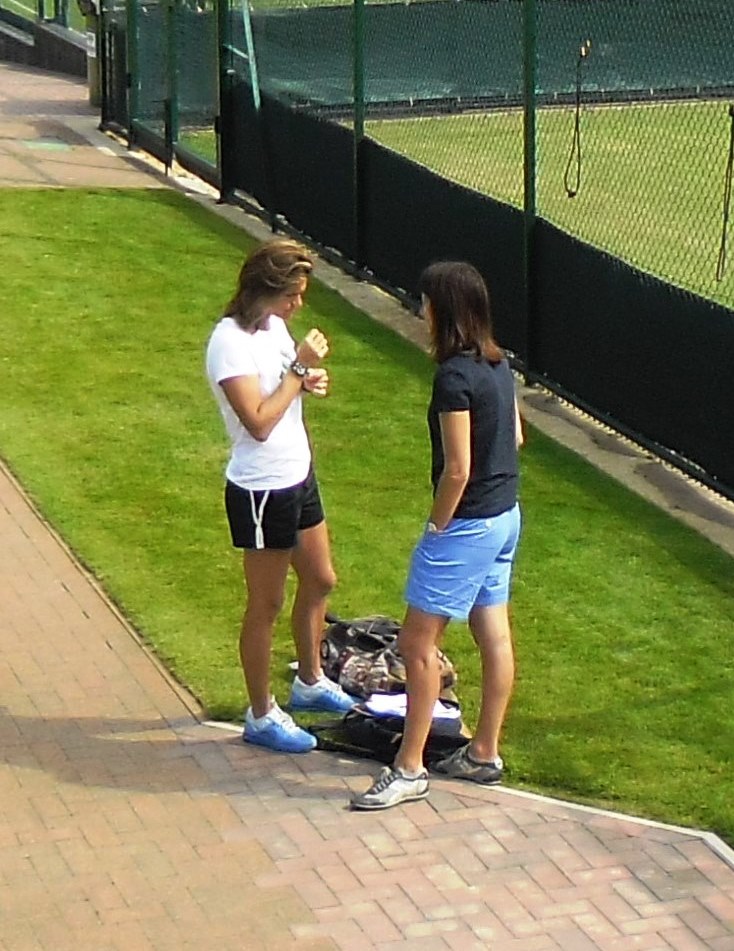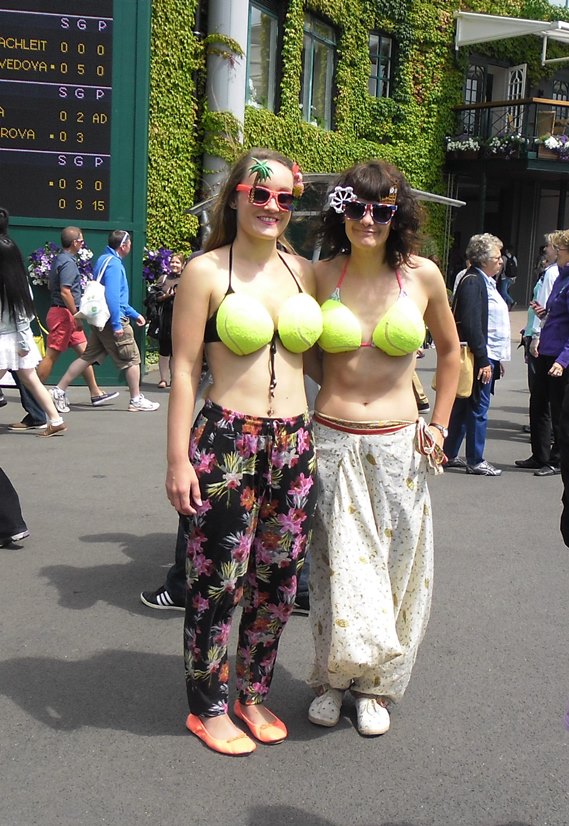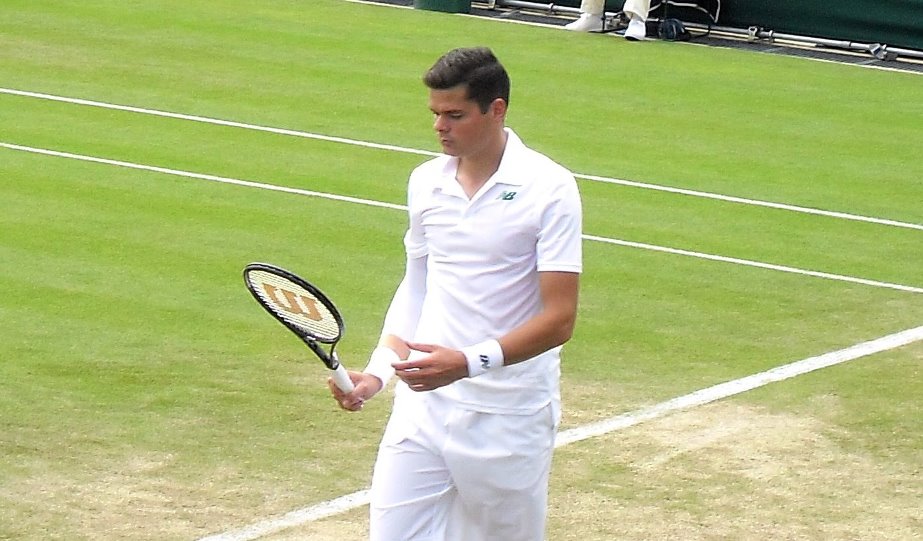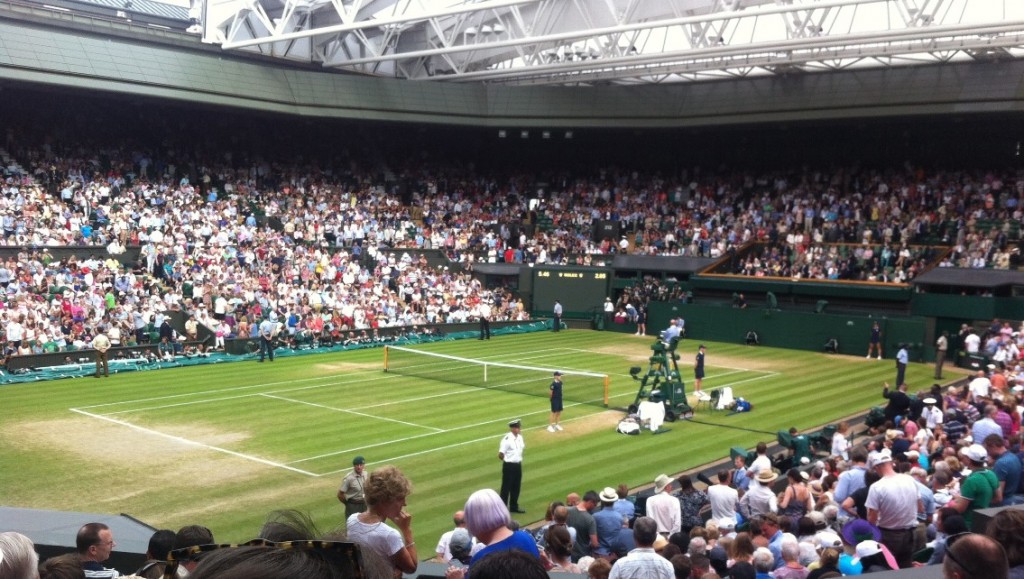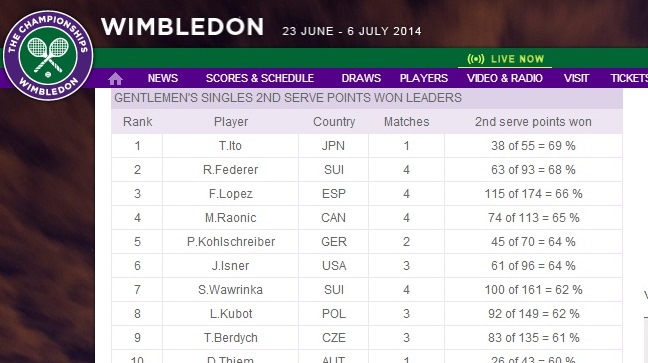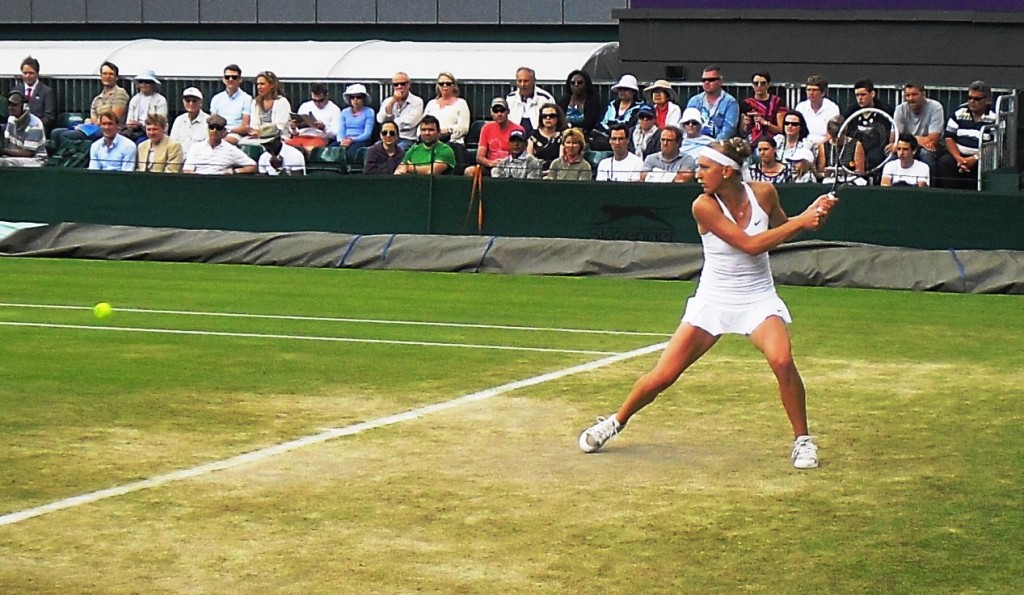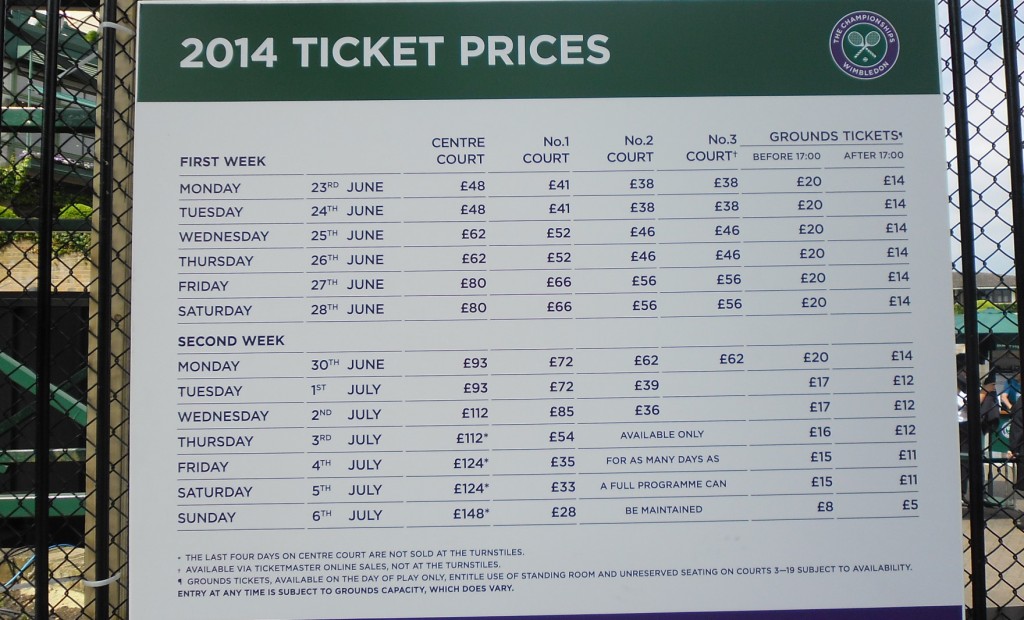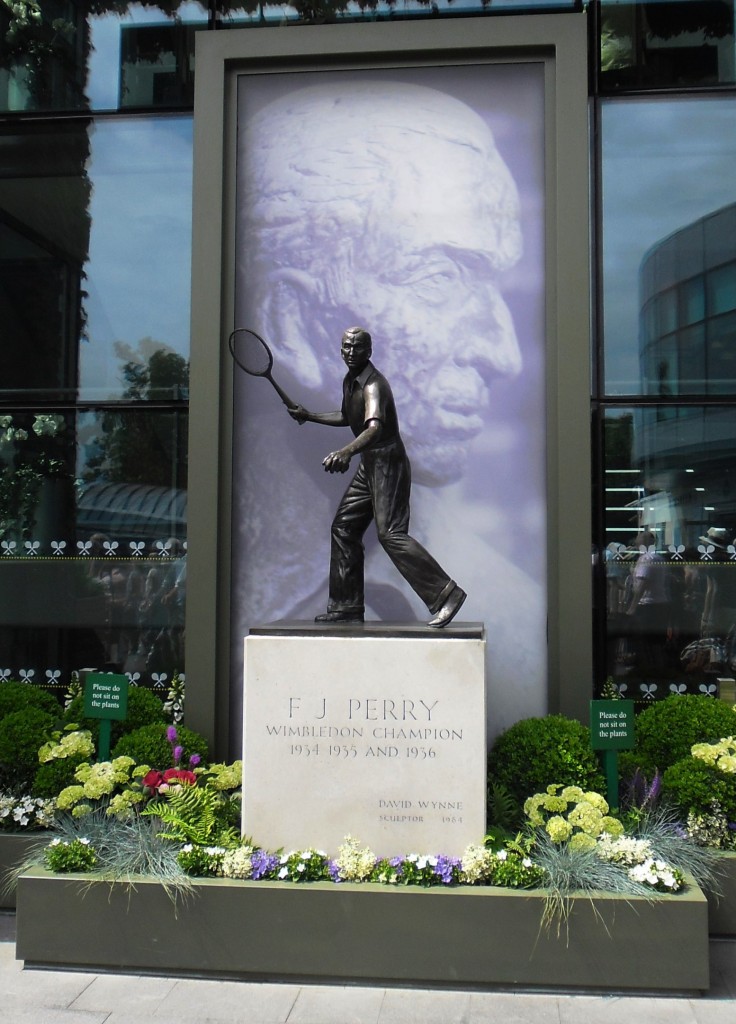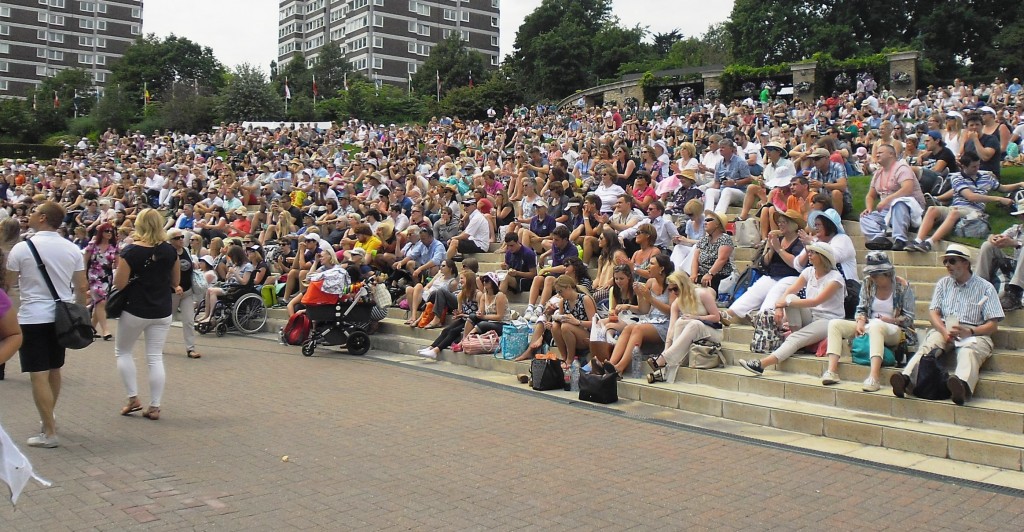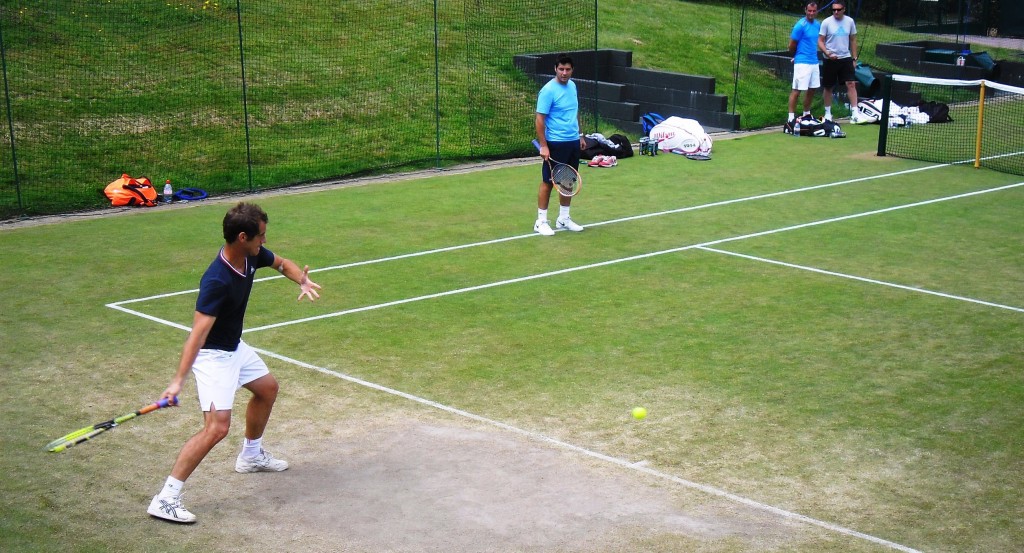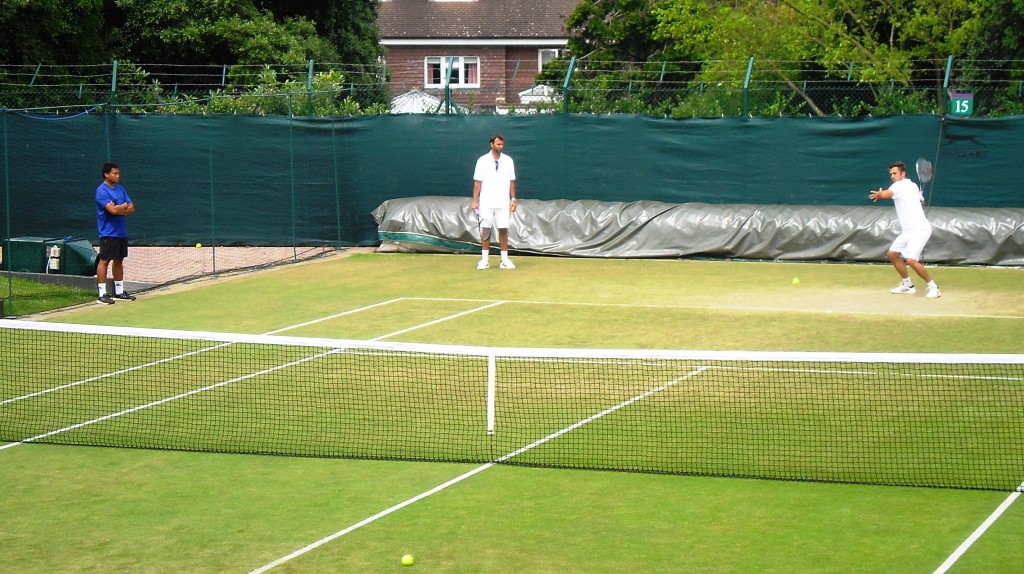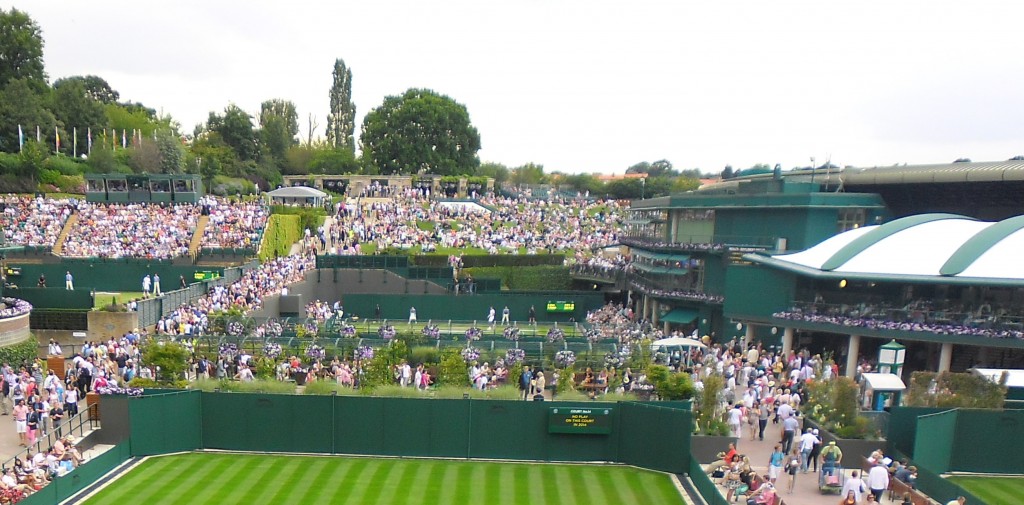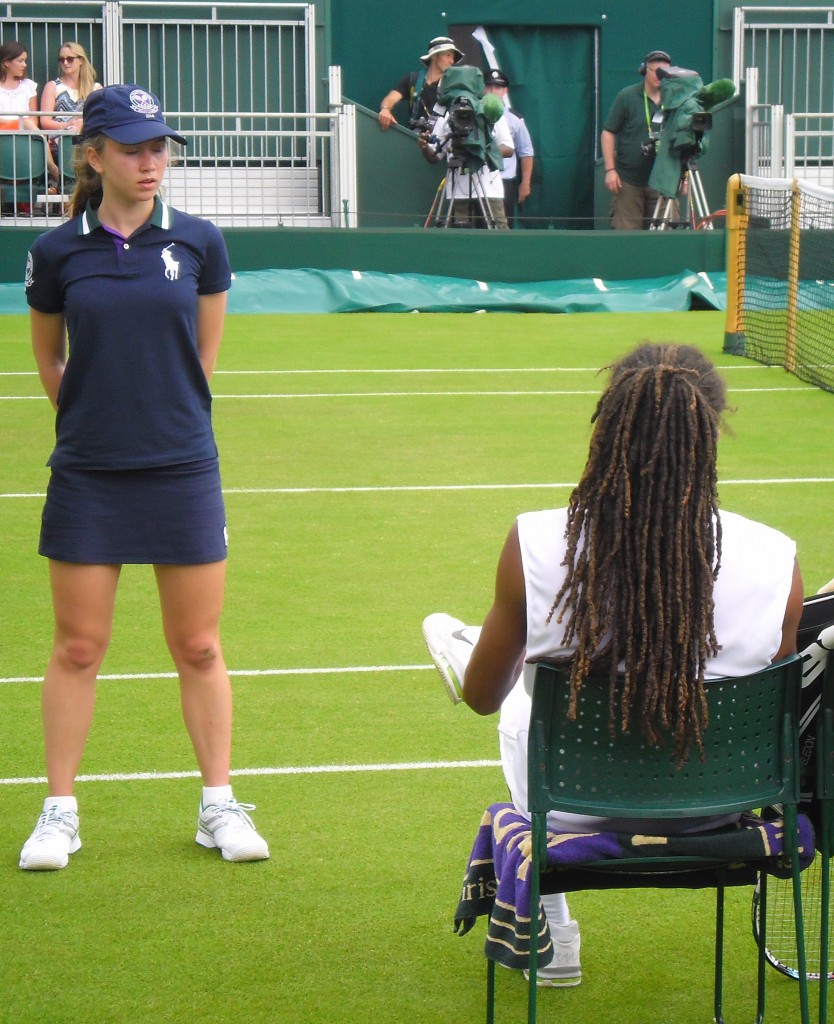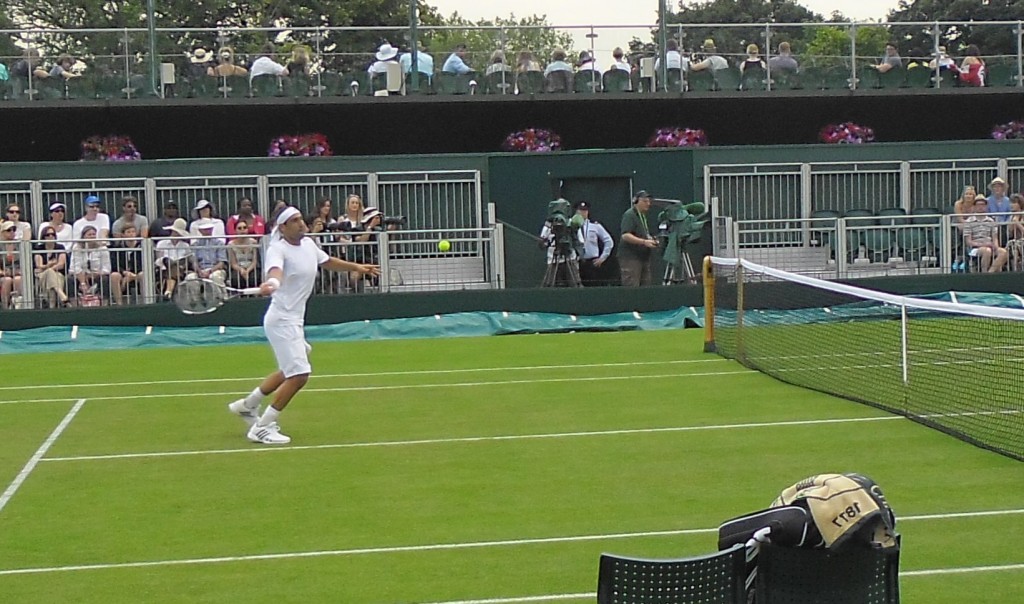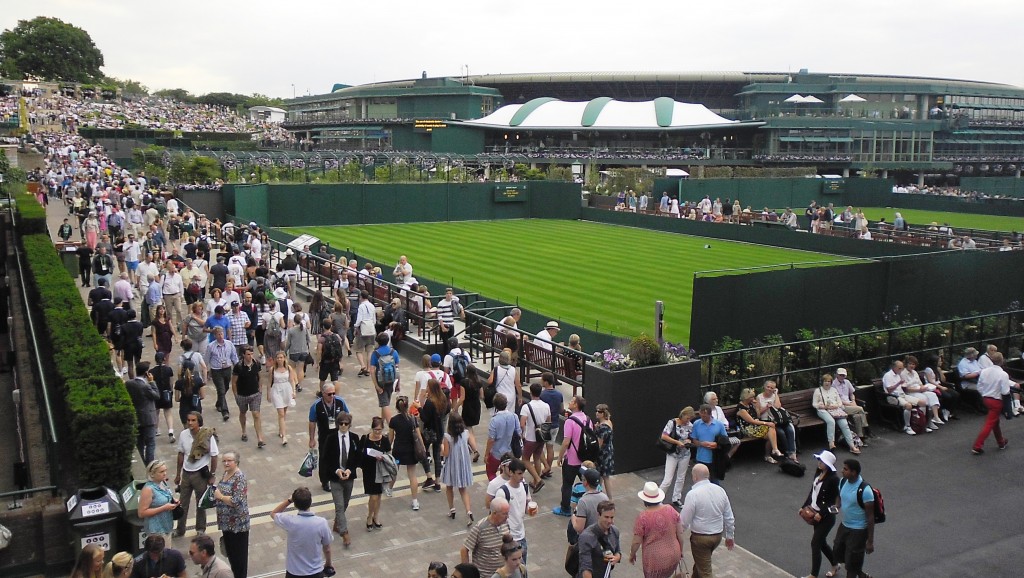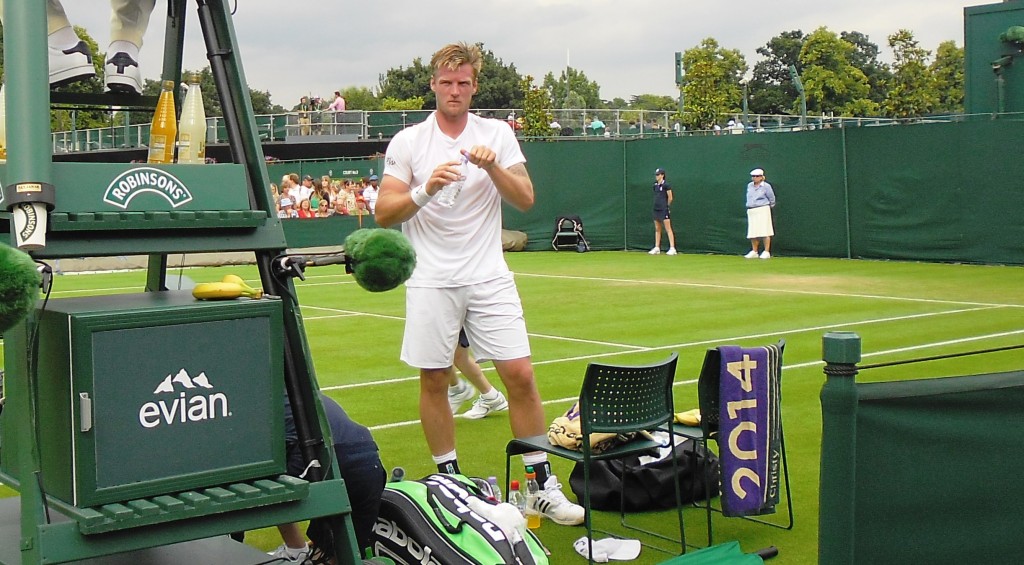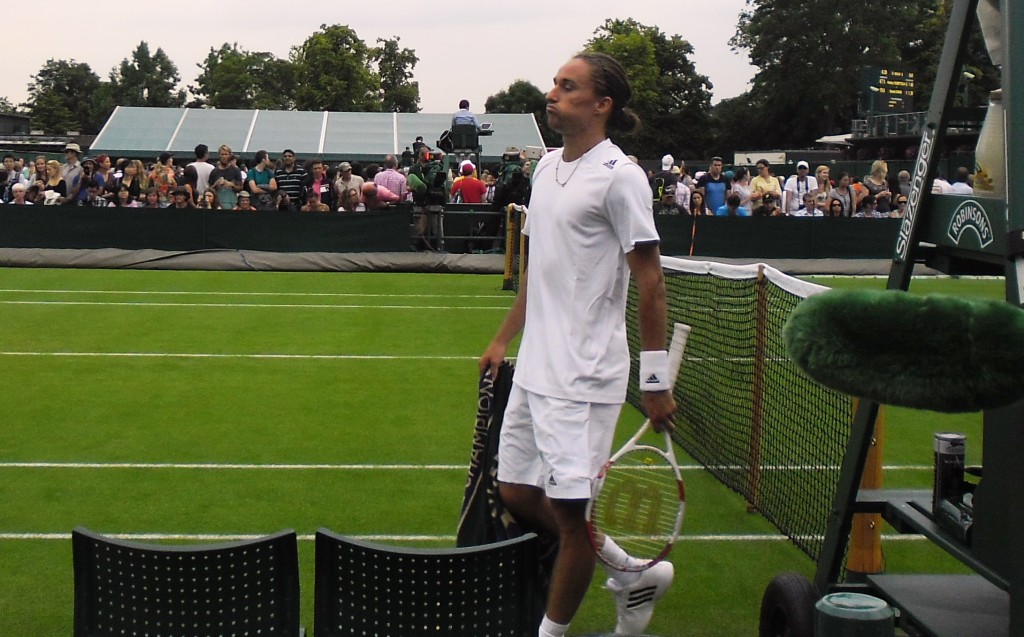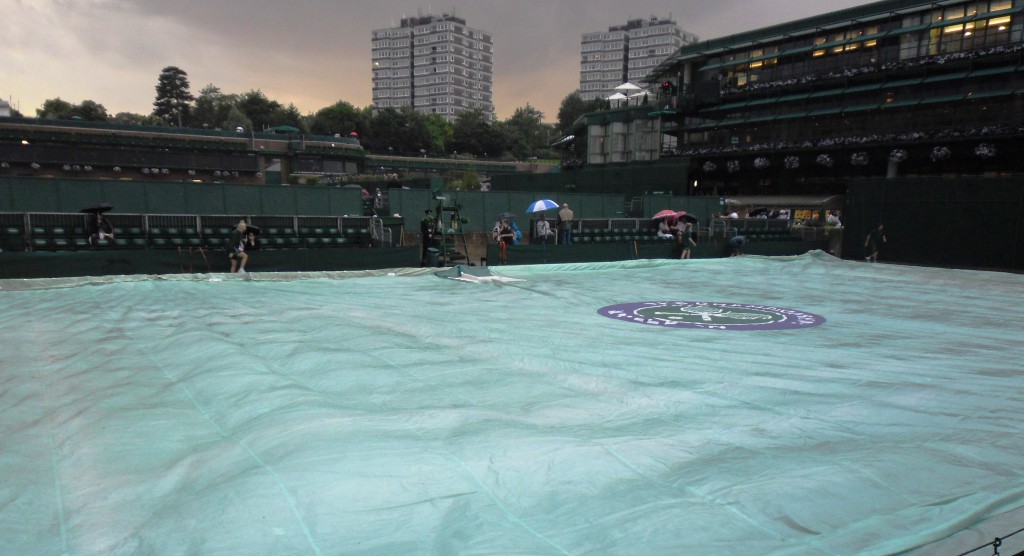Last Saturday in ‘Part A’, the focus was on how the French approach Roland Garros. Interviews with the fans in Paris mainly underlined their sentimental attachment to the nostalgia surrounding Roland Garros and the importance they place on their own countrymen and women competing in the tournament. This second installment will put into perspective how the English approach Wimbledon. In contrast to Roland Garros fans, Wimbledon fans are less emotional and more serious, and their attachments to tradition and to the sport outweigh all others. Watching great tennis supersedes the outcome of the matches. For example, Mark and Claire, a tennis-loving couple traveling from Yorkshire to London every summer for three decades to watch some Wimbledon, have a rather rational disposition when it comes to their expectations of Wimbledon. I found these two lovely characters at the Champagne Bar at Wimbledon, celebrating their arrival to the grounds with a rather large champagne bottle and anticipating a full day of tennis (pictured below).
When I asked the same question to them that I asked the Roland Garros fans – if they had the power to change one thing with regards to their Slam tournament with the snap of a finger, what would it be? –, Mark quickly brought up the presence of a number of fans, who come to Wimbledon not because they understand tennis or love the game, but simply to make an appearance and “be trendy.” Mark did remain a gentleman about it – “not really a major complaint,” he added – nevertheless suggesting a rather abrupt solution: “The LTA should probably prioritize members of tennis clubs and players who really support the sport and not just make it a complete free for all for those that just want to be seen!!!! A bit harsh maybe… but sadly true.” Both Mark and Claire mentioned the high prices on the grounds but seemed to accept it as a fact of Wimbledon: “Be prepared to be parted from your dearly beloved cash, very swiftly” Mark added while Claire pointed to the bottle on their table and said tongue-in-cheek: “I’m not sure there is anything I would change other than maybe the price of the champagne.”
When it came to tradition, Mark started out mild-mannered at first, and then finished fairly firm: “I personally think that if the changes are better for the sport and improve the general game then we should be open-minded. Having said this and from the stand point of what is a traditional British competition, we should not be in a hurry to lose its heritage and appeal. I love the etiquette that remains staunch and changing (for example) the ‘all white’ would be a travesty. Embrace the modern game but don’t forget the tradition!” Claire’s disposition could not be any clearer either: “I think we should stick with tradition as much as possible. The British are so good at it. I would hate the all-white rule to be lifted. The smartest person I have ever seen on court was when Roger Federer walked out in traditional whites a few years ago. How lovely!”
Perhaps the most striking contrast with the French fans at Roland Garros appeared when I asked Mark and Claire how they approached their countrymen and women and if it mattered to their routine of watching tennis at Wimbledon. Unlike their neighbors from France (see Part A), if forced to decide between a potentially high-quality tennis match vs. a match involving their compatriot, they would choose to watch the match that promises the best tennis, even if it did not involve a British player – and not simply go to the court to cheer their compatriot: “I think it important to remember that this competition is not a national championship” Mark added, “these players are there for themselves first and foremost and so it’s not like supporting a team at the Olympic Games. Everyone has their own favorite and it nice to have your own opinion rather than just following your own nation’s players.” Claire’s reply was less analytical but just as clear: “Always for the love of tennis!”
Danielle, a nurse in a London hospital and fresh out of university, had the same type of reactions to my questions as Mark and Claire did above. One notable difference in her responses was the emphasis on weather. Her Wimbledon program essentially gravitated around the weather conditions. She insisted that she never bought tickets in advance, and thanked Wimbledon for keeping the tradition of selling tickets as late as the day of competition, understanding that there was no guarantee that she could get them. Danielle said that she has been coming to the grounds since she was 12 years old and praised Wimbledon for thinking of its “faithful fans.” As far as she is concerned, the weather was too “upsy-downy” to make plans in advance. She preferred waiting until the morning of the day in question, watch closely the weather forecast, and then make the decision to purchase tickets or not. She accepted that she may get left out in the race to buy the tickets online once they go on sale, but added quickly that she has “become an expert on the particular art.” Apparently, she has succeeded to buy tickets on the same day for the last 6 years in a row, and even got to see the 2012 men’s semi-finals through that procedure.
This article would not be complete without mentioning Maurice, a wonderful man and the most authentic Wimbledon follower that I have ever seen. He was on the grounds with his lovely grand-daughter Sylvia to enjoy a full day of early-round matches (pictured below).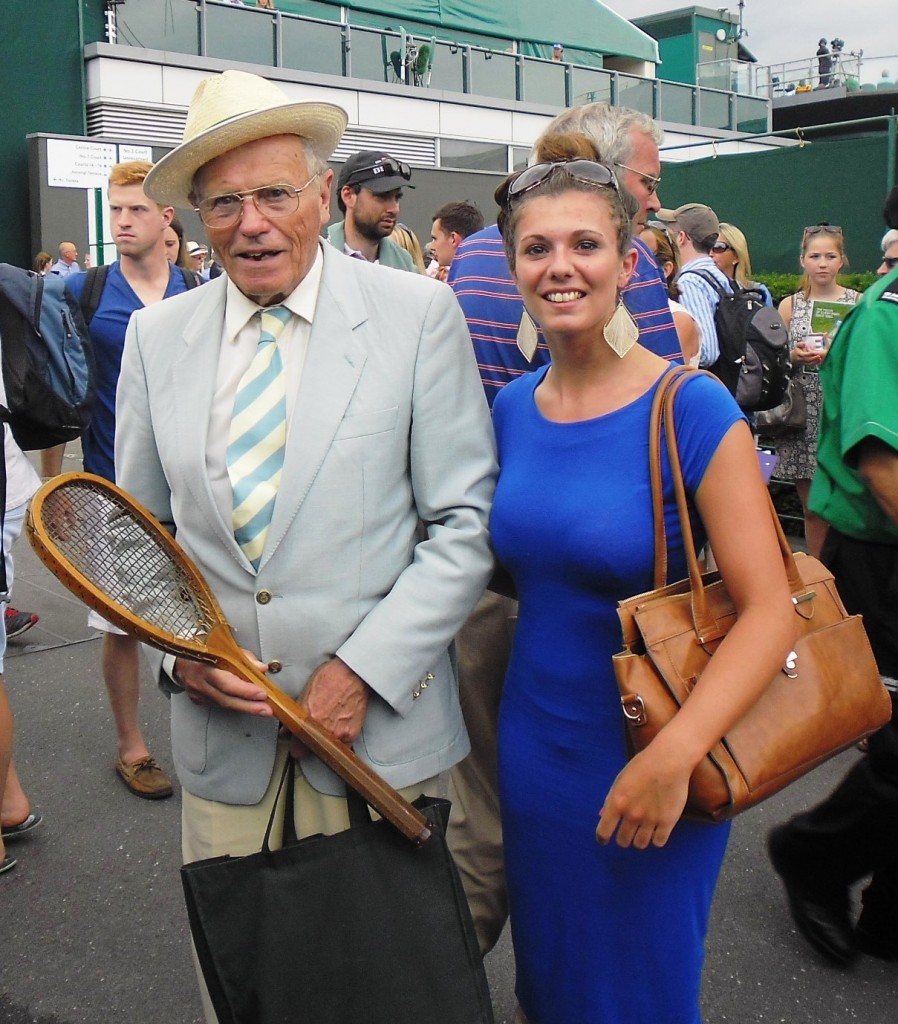
He was sporting a classy looking summer suit and carrying around an extremely vintage racket that, according to him, belonged to William Renshaw, the 7-time Wimbledon champion in the 1880s. I happened to sit next to Maurice and Sylvia by chance on court 12. Maurice’s outfit and the racket piqued my interest for obvious reasons but it was rather his knowledge of the game and its history through his comments while watching the men’s singles first-round match on the court that drove me to talk to him further. He has been coming to Wimbledon for 65 years! He was a true gentleman, engaging me in small dialogues here and there about the history of Wimbledon. He had excellent comments about both players on the court and their tactics (it was the Marcos Baghdatis vs. Dustin Brown match) and it was truly remarkable to listen to him compare the players and their strokes to those from years or decades back. By the time he gave me his card and informed me that he was a tennis writer and a coach for many years, I felt more than lucky to have spent a whole match sitting next to him and listened to countless past anecdotes, the kind you don’t necessarily find in historical data sheets. If Wimbledon valued tradition, Maurice represented it by his mere disposition.
In conclusion, it would be unfair to set the parameters of the comparison between the French Open and Wimbledon on reductive dichotomies such as “emotional vs. rational,” “nostalgia vs. tradition,” or “complainer vs. solution-seeker.” That being said, distinctions in the ways that fans approach both tournaments foreground certain inclinations: the fans of one Slam tournament do not resemble the fans of another, and by extension, there is hardly anything similar about two Slams other than the fact that they are two of the four Majors in the ATP calendar, thus shell out the largest money prizes in the professional tennis circuit. Just as the surfaces differ from Paris to London, the expectations of the fans also vary largely from those of Roland Garros to those of Wimbledon.
